Playing forward in possession
The session is designed to encourage players to make positive decisions in possession – to recognise when and how to play forward.
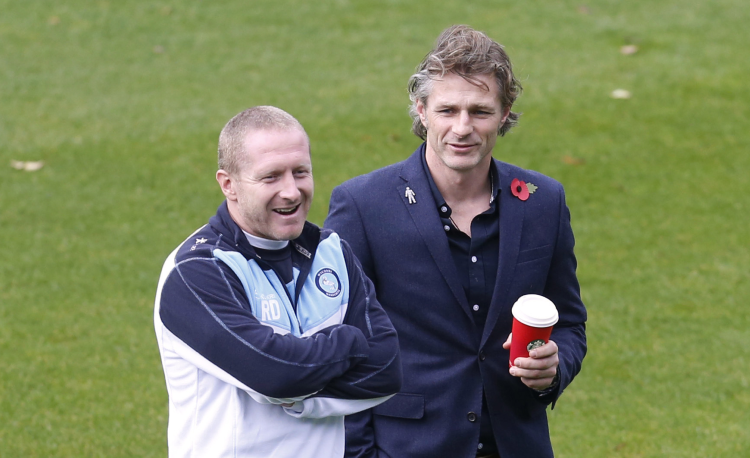
| Area | Full size pitch |
| Equipment |
Full size goals |
| No. of Players | 20 players + 2 goalkeepers |
| Session Time | Activity 1: 20mins Activity 2: 40mins Activity 3: 20-30mins |
The session is designed to encourage players to make positive decisions in possession – to recognise when and how to play forward. What’s unique here is that the players are overloaded with decisions to make, and they need to problem-solve in order to find a way to win the game. The possession practices are physically tough, so the decision-making must be done under fatigue.
The key factors for the session are to encourage players’ awareness of space, opponents and teammates, and just generally to scan; to think about their movements, developing short, sharp movements to receive; to present an open body shape to accept a pass and play forward; and to make decisions about playing the ball forward.
Problems we might come up against would be passing for passing’s sake when there are opportunities to play progressively or through your opponents, or a closed body shape on receiving the ball – the progressions will highlight players who do not open up their body.
This session would be done on a Tuesday, as part of our physical conditioning, but related to the upcoming game and the way we want to play.
“Players need to problem-solve in order to find a way to win the game”
Activity 1
The first activity needs to be set up in boxes 15yds x 15yds, with a 10yd channel between them, with touchlines either side to keep the practice controlled and tight.
We have three teams of four (or five or six). The team in possession (red) must make eight passes inside their area before transferring possession from their area to the opposite team’s (blue) area, under head height and either directly or by using one of the opposite team’s players who has moved out of their area to make an angle to receive [1a].
[1a]
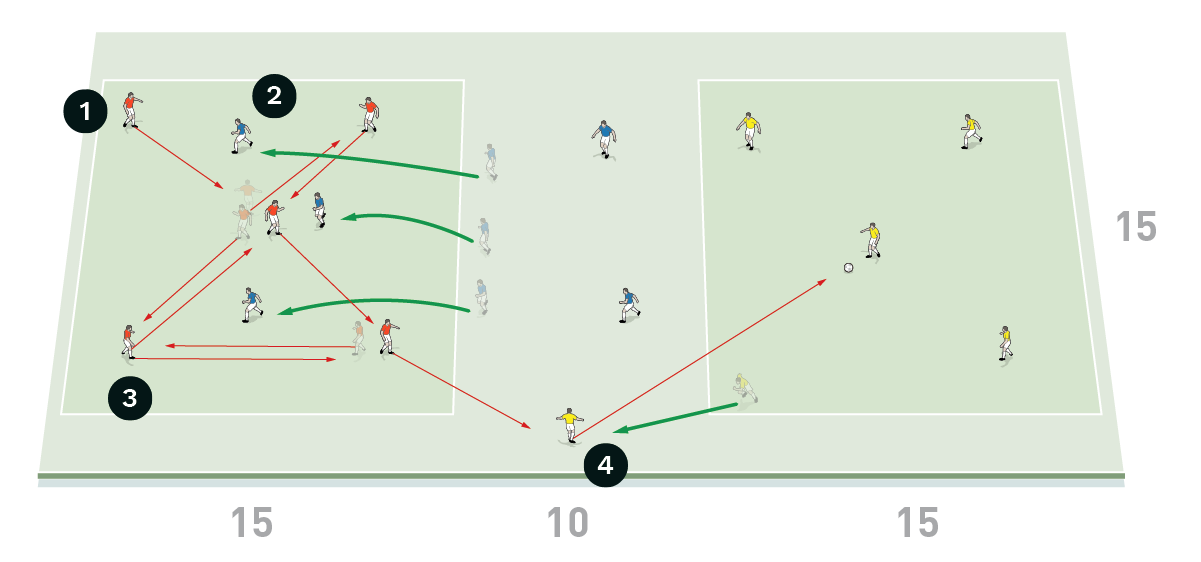
-
The red team are in possession.
- The blues are looking to win the ball back, with three players in the red area and two stationed between the areas.
- The red team makes eight passes in their area.
- A yellow player moves into the middle to make an angle to receive and transfer the ball to their area.
“The touchlines either side keep the practice controlled and tight”
The defending team must send two (or three) players into an area to try and win possession. Their remaining players must sit between the two possession areas, screening, and attempting to intercept transfers between them. If they win possession they swap roles with the team that has given possession away [1b].
[1b]
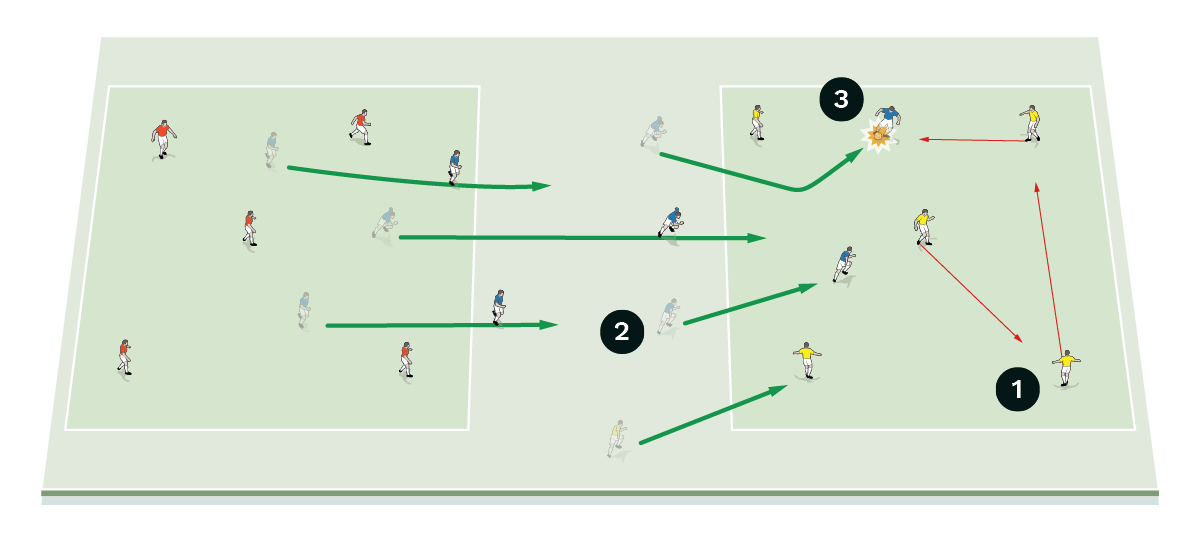
-
The yellows now seek to make eight passes.
- Three blues enter the area to win the ball back, two station themselves between the areas.
- A blue player wins the ball back, the blues must now swap roles with the yellows.
Success is when a team successfully makes eight passes in their area and transfers the ball cleanly into the opposition team’s area.
“Players sit between the two possession areas, screening, and attempting to intercept transfers”
Activity 2
This activity takes place in the middle zone, 50yds x 50yds, with a 5yd channel around the outside – only target players are allowed in the channel.
Develop the movement patterns, body shape and progressive thinking needed to be successful in the first activity into a larger area. The same principles apply but now players are executing them in a bigger area amongst more chaos.
Teams must keep possession in the square and by using the target players on the outside of the square. To score, they must transfer possession from one target player to the opposite target player via a player or players inside the square [2].
[2]
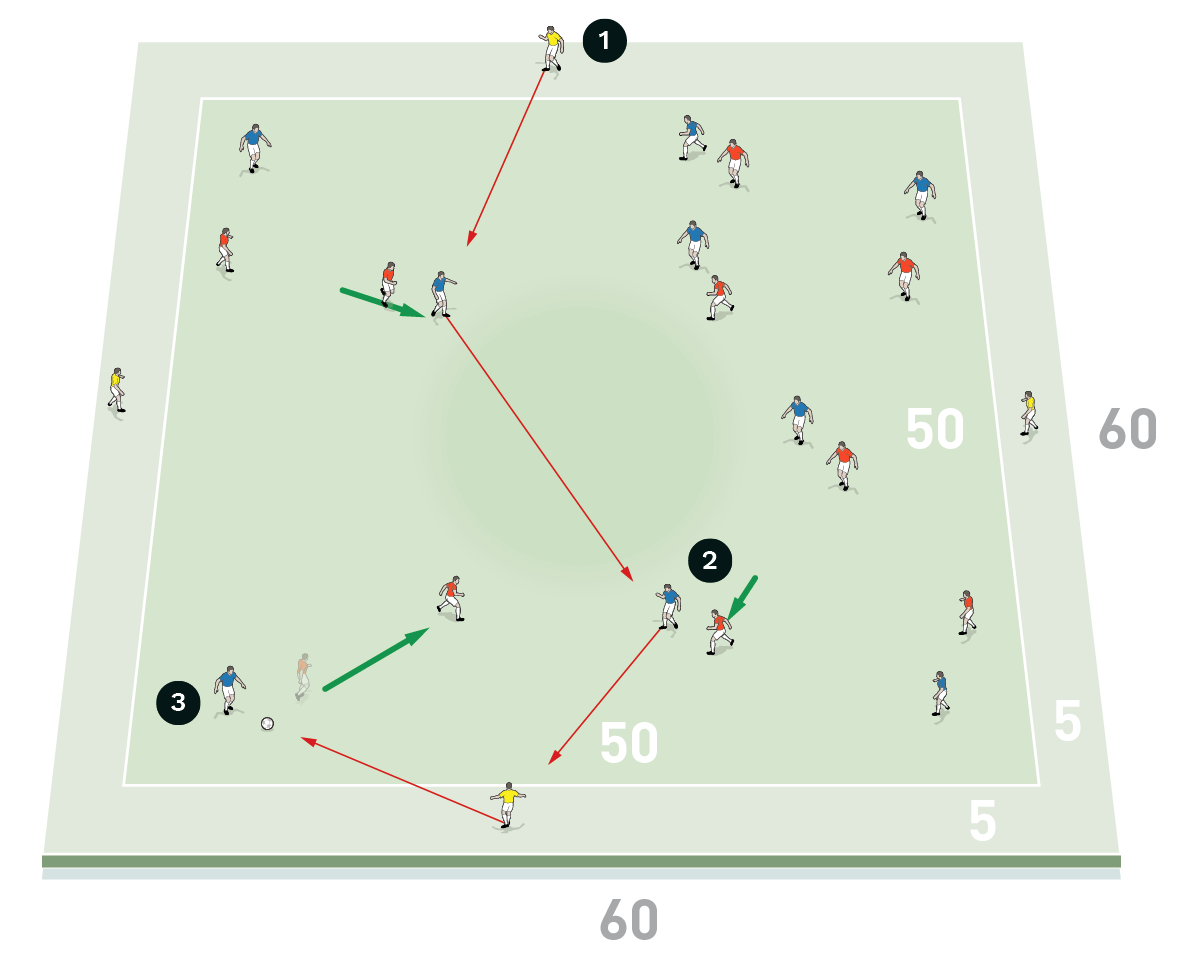
-
A target player starts with the ball, playing it in to a blue player.
- The blues work it to the target player on the other side to gain a point.
- The target player plays it back into a blue and the blues look to go the other way.
If they cannot pass into the opposite target player, they can pass into the wide target player and change the direction of the attack.
Target players must keep the ball moving after receiving, and then pass back to the team that played into them.
The target player passing into the square replicates a centre half playing into the midfield, the opposite target man replicates a forward, and the two wide target men replicate wingers. The idea of this activity is to encourage players to think forward and play into the ‘striker’ as early as possible. If it is not possible to play into the striker, they can stretch their opponents by playing wide and supporting the ball to switch play.
You can progress this by saying that players cannot pass back to the target player that they received a pass from, encouraging them to improve their movement to get free and receive the ball with an open body shape. You could also say that the ball must pass through the shaded area to score. In the past I have added this progression and given teams three goals for a transfer of possession through the shaded area (normally the centre circle) and one goal for a transfer that doesn’t enter the shaded area. This encourages greater rotation to create space and receive through the shaded area and players to take greater risks with penetrative passes to play through the middle of the pitch in tight areas.
Activity 3
Finally, we progress to 11v11 working on the principles practised in the sessions above [3].
[3]
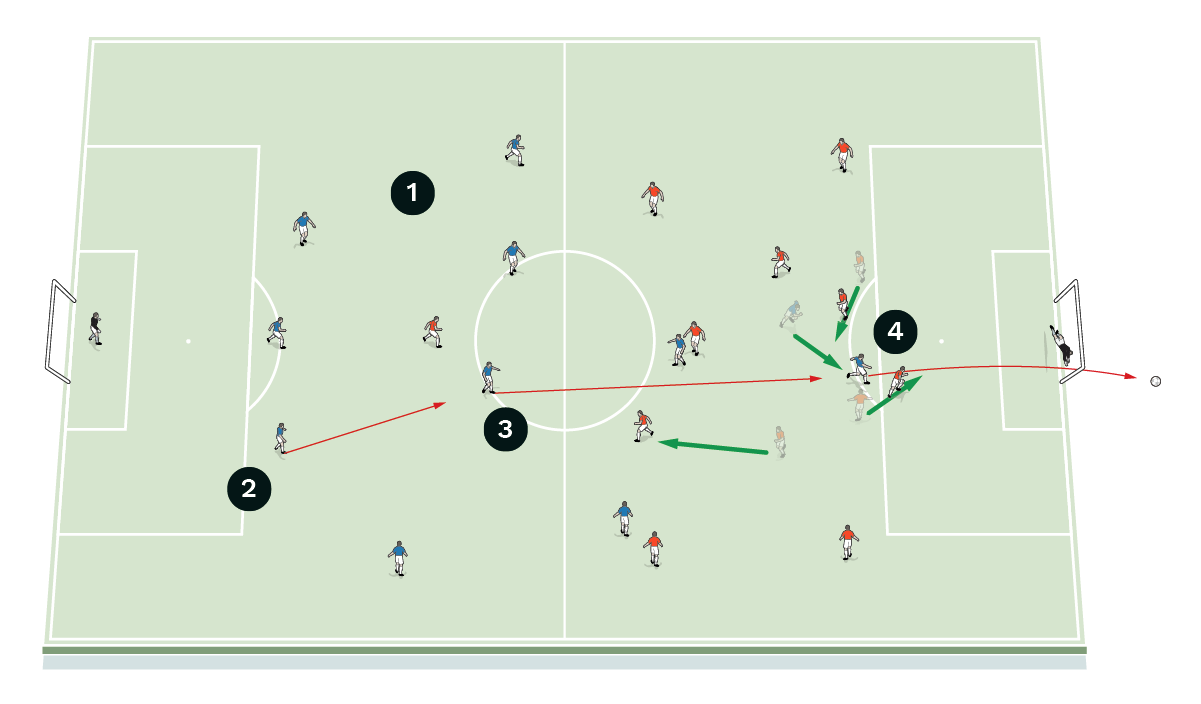
-
The teams now play 11v11 on a full-size pitch.
- The blues are in possession.
- The centre half plays it into the centre midfielder.
- The striker makes a run for the forward ball from the midfielder, shoots and scores.
The players should be tuned into thinking about playing forward and progressively, and having come from a tighter area with more bodies in the midfield area, they should feel as though they have more time and space if their movement is good. By now they should be tuned into looking for progressive passing options and how to create them. Now, in 11v11 structure, they should be able to execute them in a less chaotic environment.
“Encourage players to think forward and play into the striker as early as possible”
Editor's Picks
Attacking transitions
Deep runs in the final third
Using the goalkeeper in build-up play
Intensive boxes drill with goals
Penetrating the final third
Creating and finishing
My philosophy
Pressing initiation
Compact team movement
Coaches' Testimonials

Alan Pardew

Arsène Wenger

Brendan Rodgers

Carlos Carvalhal

José Mourinho

Jürgen Klopp

Pep Guardiola

Roy Hodgson

Sir Alex Ferguson

Steven Gerrard
Coaches' Testimonials

Gerald Kearney, Downtown Las Vegas Soccer Club

Paul Butler, Florida, USA

Rick Shields, Springboro, USA

Tony Green, Pierrefonds Titans, Quebec, Canada
Join the world's leading coaches and managers and discover for yourself one of the best kept secrets in coaching. No other training tool on the planet is written or read by the calibre of names you’ll find in Elite Soccer.
In a recent survey 92% of subscribers said Elite Soccer makes them more confident, 89% said it makes them a more effective coach and 91% said it makes them more inspired.
Get Monthly Inspiration
All the latest techniques and approaches
Since 2010 Elite Soccer has given subscribers exclusive insight into the training ground practices of the world’s best coaches. Published in partnership with the League Managers Association we have unparalleled access to the leading lights in the English leagues, as well as a host of international managers.
Elite Soccer exclusively features sessions written by the coaches themselves. There are no observed sessions and no sessions “in the style of”, just first-hand advice delivered direct to you from the coach.








